
Repairing communities through design
SUPER STUDIO EDITION
Students had one week to work on their concepts as part of the 2022 Super Studio design challenge. Students were asked to envision a future where we move beyond sustainability, where more connected communities are capable of reversing the damage we’ve inflicted upon our planet, and where design has the power to regenerate. Students were asked to select a familiar place and through the lens of regenerative design, propose a design response that has the capacity to positively impact its community.
CONTRIBUTORS
- Nimisha Prashanth
- Briony Ashton
- Vineetha Babu
- Mai Bandem
- Carmel Beamer
- Cayley Chan
- Wen Bin Chong
- Jane Cutropia
- Yunxi Du
- Josh GODDARD
- Maria GRAINGER
- Katherine HADDOCK
- Brooklyn HASSOLD
- Hongyu HUANG
- Vanessa JANE OMAMALIN
- Will JENKINS
- Jing KANG
- Caleb LEE
- Riley LEHMANN
- Wendy LIN
- Mingxun MA
- Kate MAIDEN
- Nicholas MARCHESAN
- Conner McBEATH
- Gizelle McKINNON
- Xing Ting NG
- Chiharu OGITA
- Wendi PENG
- Nithya RANASINGHE
- Anupa RANCHAGODA
- Yi REN
- Charensia ROMPIS
- Holly Salvador
- Lucy Stefanovic
- Cath Styles
- Mandy Sun
- Pei Kai TAN
- Coco WANG
- Kaytee Warren
- Maddi WHISH-WILSON
- Steph WILLS
- Shichen YAN
- Sophia ZHAO
- Kangcheng ZHENG
- Yuting ZHENG
ESPRIT FOUNDATIONS
Josh GODDARD and Anupa RANCHAGODA
Undergraduate students, Univeristy of Queensland
Esprit Foundations will focus on using the negative connotations from potential future flood events, and create positive opportunities by implementing manual biofiltration. A strategy of collective good will see community members utilise and maintain their own ‘activated spaces’ in their suburban parklands to promote sustainable and regenerative qualities. The emphasis lies on the narrative of this proposal – micro interventions can utilize the negative to drive towards a positive methodology, having a macro effect.


COLONISING NATIONAL MYTHIC SPACE
Maria GRAINGER and Cath STYLES
Undergraduate students, University of Canberra
Our site for the intervention is the Australian War Memorial in Canberra. It’s the foremost locus of national commemoration, of ancestors buried before their time. Simultaneously it is a repression, of the frontier wars as the first chapter of Australia’s military history. We propose to collaborate with Aboriginal and Torres Strait Islander people to reframe this national mythic space, to wrap it in practices of recognition and reconnection, and to reactivate and regenerate it as a place of belonging for community, nation and Earth.
ALGAE-FIT
Wendy LIN, Steph WILLS and Cayley CHAN
Undergraduate and Masters students, Univeristy of Melbourne
The combined proposition of an algae facade system, hydroponic urban farming, and pop-up laneway activation seeks to benefit environmental sustainability, economic sustainability, and social impact by responding to current issues of climate change, the carbon footprint of the built environment industry, food supply shortages, increased living expenses as well as a social disconnect between people, community and Country.
The proposition seeks to generate a model for site remediation through the regenerative production and consumption of algae.

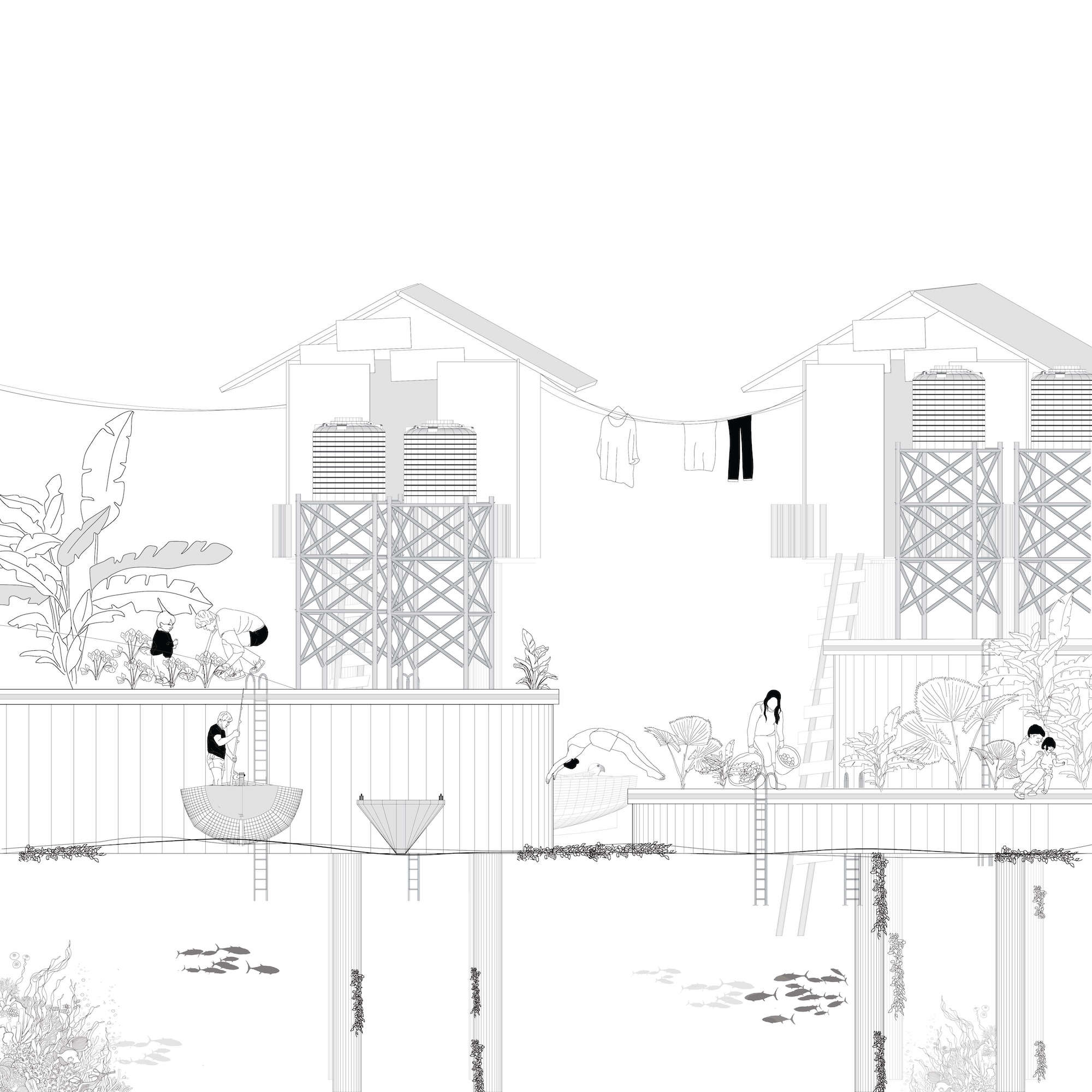
THE BACKYARD
Wendy Bin CHONG, Vanessa JANE OMAMALIN and Nimsha Prashanth
Masters Students, University of Adelaide
For years, the stateless Bajau community have lived a nomadic sea-dwelling lifestyle around the South-East Asian nations. Over the years, due to multiple reasons, fishing, the main income source, has become unstable and unreliable, driving the Bajaus to poverty. The proposition designs “stateless” islands that act as a habitat where freshwater is collected and vegetables are grown creating a floating farm on the sea. The islands are similar to the backyard of the modern house where flexible activities like gardening, playing and gatherings transpire.
TEXTILES TO TECTONICS
Kaytee WARREN, Maddi WHISH-WILSON and Lucy STEFANOVIC
Undergraduate students, University of Queensland and Queensland University of Technology
The fast fashion industry is one of the most significant contributors to our current climate breakdown. We propose a pavilion that facilitates the exchange of unwanted clothes and, the upcycling of textiles into bricks. These bricks are created through a process of shredding, mixing, compressing and drying and can be used to make furniture and partition walls. Our clothes tell a story about who we are, and it is through the exchange of clothes we can begin to repair the tears in our urban and social fabric.


DARE TO FEEL
Briony ASHTON
Undergraduate student, University of Notre Dame
This proposition dares you to feel the history Indigenous people have lived and understand the impact it has had on their mental health, therefore becoming an ally in reducing the prevalence of poor mental health and the phenomenally high suicide rate among First Nations people. My home is Narrogin, a rural town in the Wheatbelt. Indigenous numbers are high here, 7.7% compared to the national average of 3.2%, walk with me as my work explores the impact of history and the loss of life to suicide.

RE_ALLEY
Pei Kai TAN and Xing Ting NG
Undergraduate students, University of Tasmania
Our proposal features three stages: rebuild, reunite, and regenerate. During rebuild stage, the community comes together to build the design responding to the back alley. An event is then held to celebrate and reunite the community. After a week, the installation is taken down and the process takes place at another alley. It then continues and on to other alleys. We hope to start a discussion on the way we view back alleys, from a negative space to a positive one where it can be utilised for better purposes.
PARAMETRIC SPRAWL
Sophia ZHAO, Yuting ZHENG and Coco WANG
Masters students, University of Sydney
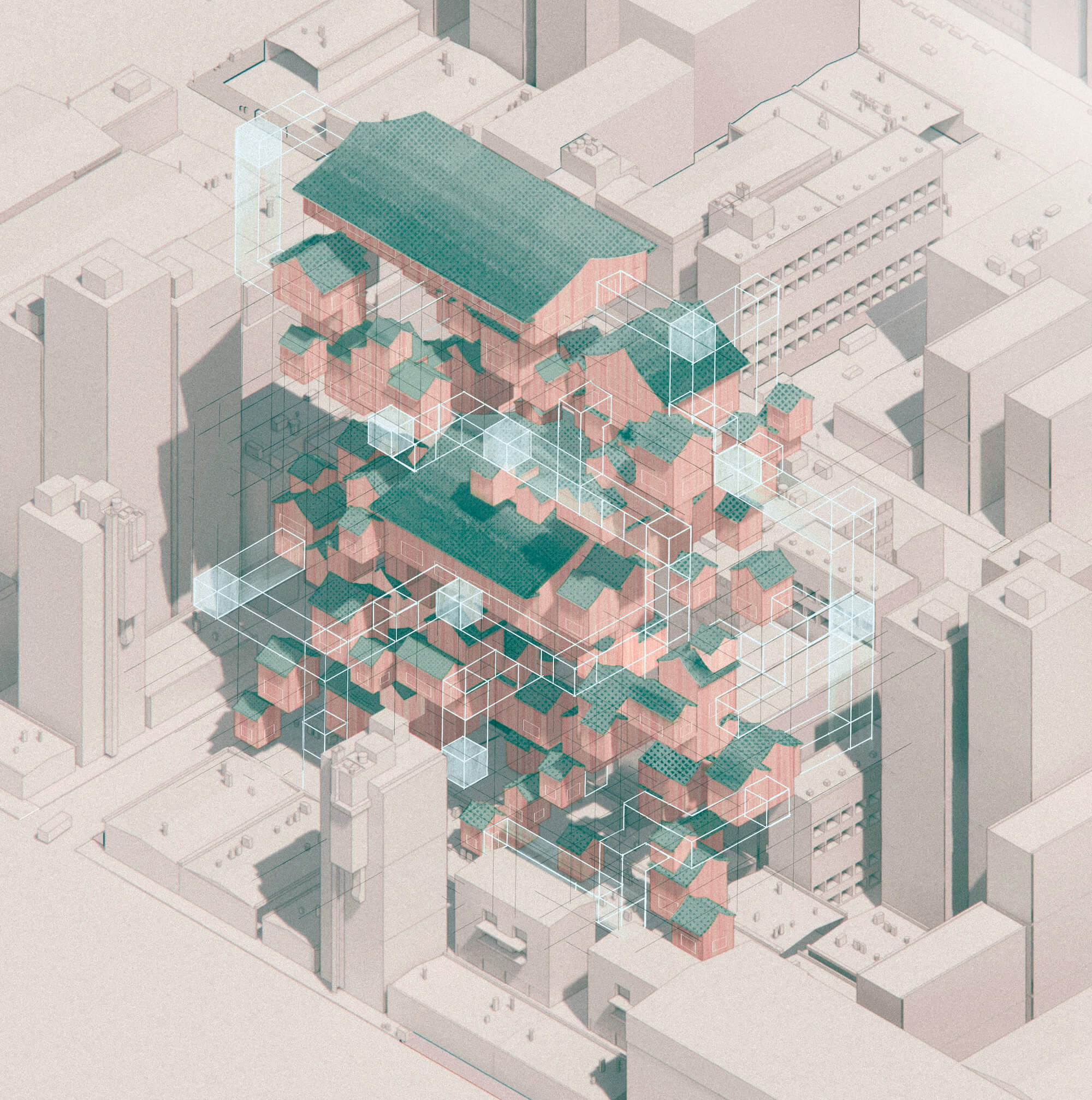
Through our design, we aim to abridge the cultural value of affinity drawn from the Beijing Hutong and the structural integrity of apartment towers, establishing a new residential methodology that inspects into the future. Our proposal aims to reassess the present fixation on individual properties, which induces the exploitation of materials. Envisioning an assemblage of multi-purpose dwellings that echo the objective of Beijing Siheyuan, our design seeks to regenerate the sharing of resources across all dwellings.
ALTOGETHER
Kangcheng ZHENG and Hongyu HUANG
Undergraduate students, University of Sydney

At our site, George St. in Sydney, feeding nurtures mynas, whose existence threatens native species. This progressive program starts with a single object, where people can nurture native floras while reducing the feeding for urban birds. Multiple installations would link reserves nearby, reintroducing local species. Local businesses could join this process, providing services to make spinning a rewarding and adventurous experience. Finally, the installations are connected via a cable system, taking bags only, which is energy efficient, with the help of shopping bags’ gravitational potential.

THE RINSE CYCLE
Caleb LEE and Nithya RANASINGHE
Masters students, RMIT
The petrol station is soon to become an urban artifact of the past in our current climate emergency. Taking advantage of its ubiquity throughout Australia, we propose to re-stereotype the “servo”, as a cleaning, productive member of the suburb. A laundromat is placed within the service station which would not only regenerate the social disconnections, but its gray water is retained from the initial rinse cycle and reused in a process of “soil washing” to decontaminate the site. From a simple anecdote, an everyday ritual becomes a communal contribution towards the regeneration of place, suburb and ultimately prospective neighborhoods on our suburban fringe.
THE PROPOSAL
Riley LEHMANN, Will JENKINS and Connor McBEATH
Masters students, University of Queensland
The answer is, to do nothing.
Often, we like to dream of solutions that have all the answers, the ‘one liner’, that can solve all our problems. Is it so radical to believe that the answer may lie in our in-action? Our proposal is the gift of time, time for buildings to develop into these well-worn, productive and valued members of society. Only adding-to or adapting, never destroying. A philosophy of inherent sustainability. Doing ‘nothing’ can allow our built environment to mature, sink into place and develop an attractive patina.


THE MELBEANS EXPEDITION
Charensia ROMPIS, Mandy SUN and Vineetha BABU
Masters students, University of Melbourne
In the quest beyond sustainability towards regeneration, the Melbeans Expedition explores a future proof framework that redefines Melbourne’s coffee culture. As a response to disrupted supply chain and food insecurity over the past few years, the design centers around resilient production and distribution, fostering place stewardship. A plant-to-go initiative encourages visitors to take home coffee or vegetable seeds to grow in their neighbourhoods, or even backyards and balconies.
INTER”NET”
Yunxi DU and Yi REN
Undergraduate students, Univeristy of Melbourne
Inter “NET”, is created as a public memory bank, aiming to reconnect the people to the community, and relink the site to the macro context. It slowly, systematically, and automatically builds up the social network inside the small community, while individual memories are stored, shared and distributed throughout the neighbourhood, city, and forward country. The Inter “NET” offers a medium for those living in a supportive social environment who are keen to share memories and experiences that define their identities, aiming to develop a social and cultural philosophy of regenerative sharing in the future.
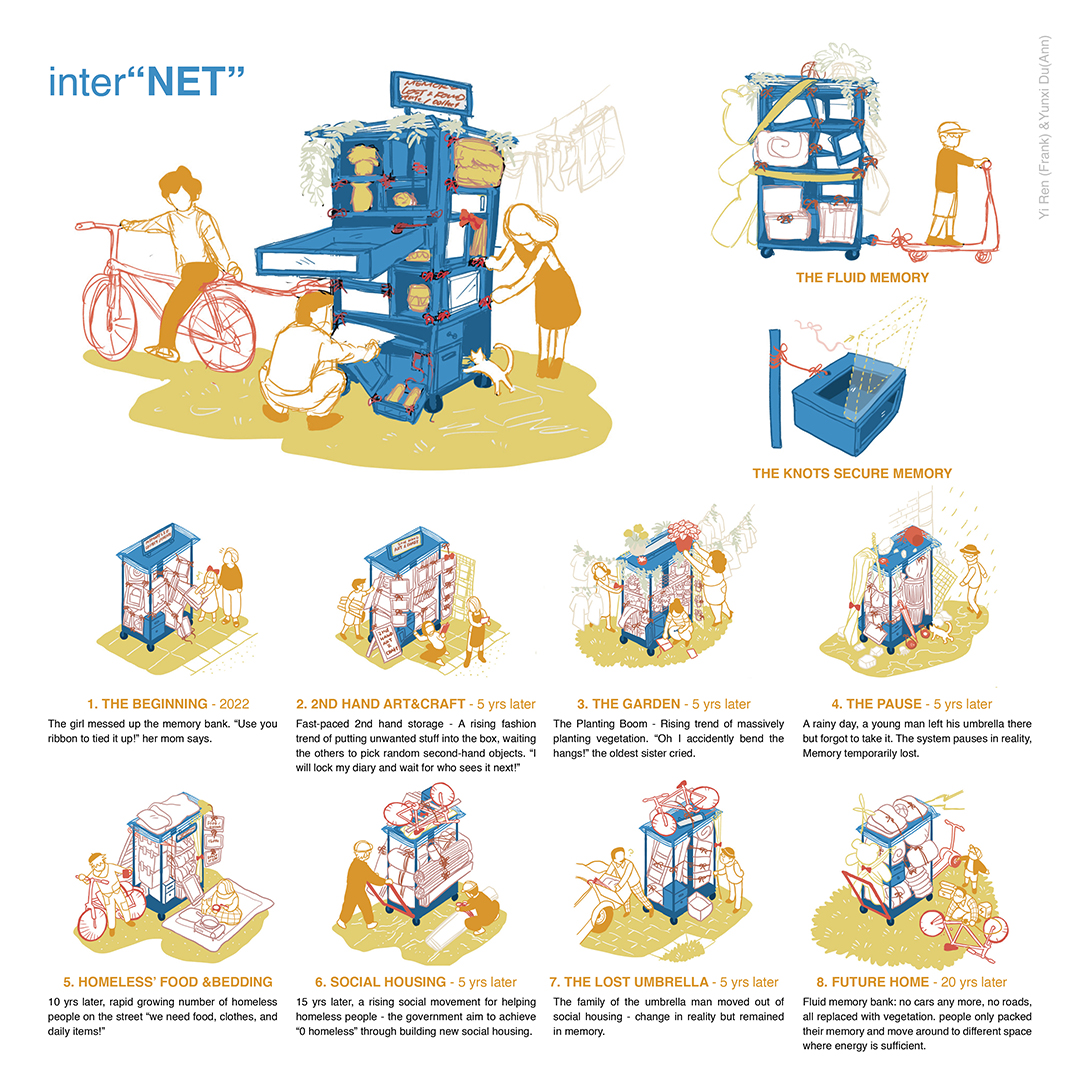

RHYTHMIC REMNANTS
Holly SALVADOR, Chiharu OGITA and Mai BANDEM
Undergraduate students, University of Sydney
This art installation engages the concept of contemplation and release in an immersive setting conveying unity and self-affirmation for wellness. The constant noise and sounds of the ever-bustling modern world can be overwhelming, making quiet and silence a rare entity. For the contemporary human, time spent in the absence of loud sounds can generate feelings of nothingness and solitude that can bring numerous physiological, psychological, cognitive and behavioural benefits. Rhythmic Remnants retrieves the past, revives the present and realigns one’s future for inner peace.
PEEWEE’S CORNER
Gizelle McKINNON
Masters student, University of Newcastle
Peewee’s Corner expands the identity of an inner-city heritage building, attracting native birdlife and practicing micro-waste management through planters and worm farms. The project aims to reintroduce a native species to its former habitat, providing food and nesting materials for the Peewee bird. It emphasizes the importance of a building’s longevity and maintaining relations with “previous tenants” despite its current reuse. Although the building is already being reused, it should remain active in it’s efforts to mend relations with ‘previous tenants’.

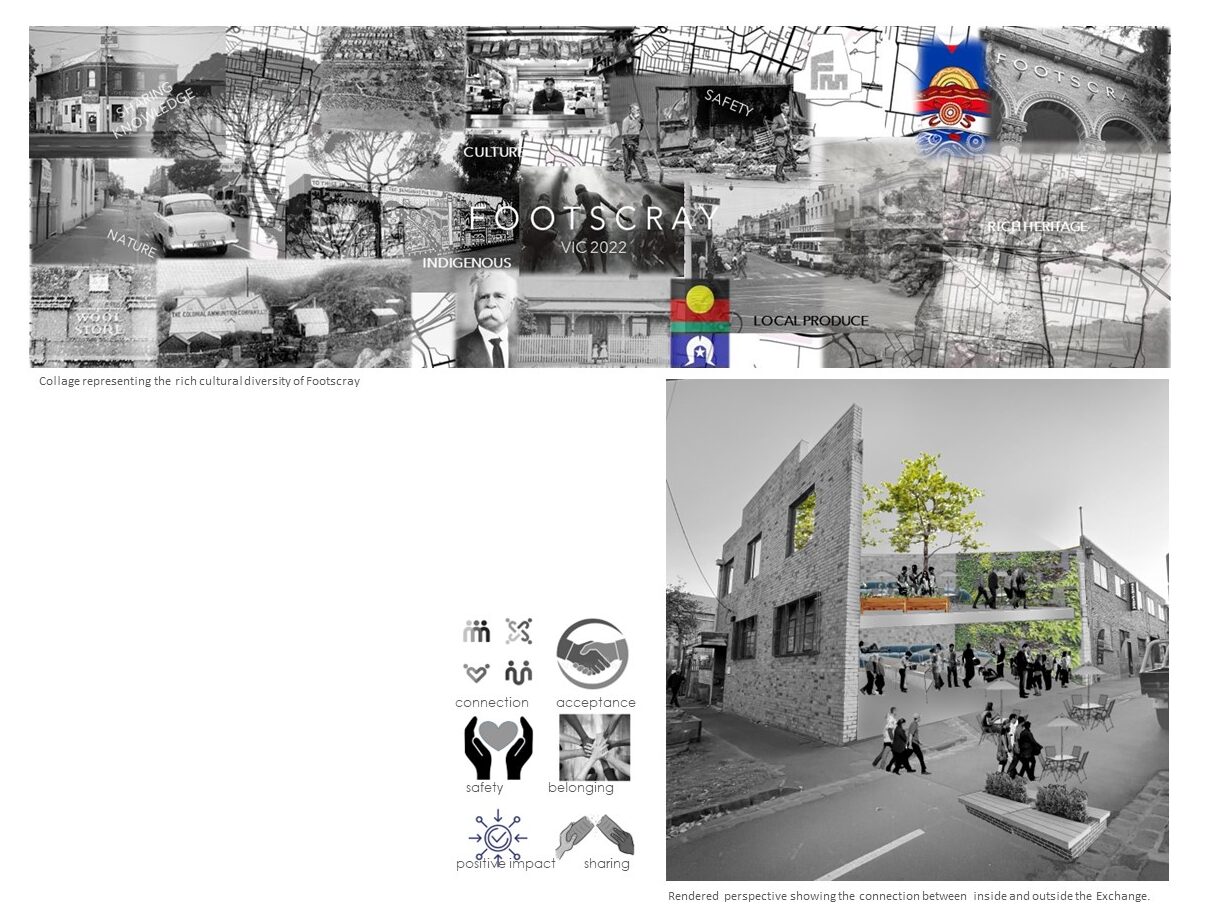
FOOTSCRAY EXCHANGE
Katherine HADDOCK and Jane CUTROPIA
Undergraduate students, Curtin University (online) and Deakin University
Bringing joy to a community, through creating a safe space for locals to engage and share stories and ideas with a culinary focus. The rich cultural history of Melbourne’s western suburb of Footscray has evolved over time. Drawing from indigenous influences and the current mixed demographic, an invaluable cultural exchange begins. This roofless space provides a haven for growing produce, abundant gardens and intimate spaces for quiet contemplation, meeting friends or sharing horticultural ideas.
MEETING, MELTING, MOULDING
Jing KANG and Mingxun MA
Masters students, University of Melbourne

We took traditional papermaking techniques as a starting point, significantly influencing Asian culture. We reflected on the “Australian Dream” lifestyle that has been in demand during the Australian migration wave and considered how to reintroduce the wood trimmings from new houses as a renewable resource into the papermaking process. During Asian Paper Month, held annually, the public is encouraged to bring paper and fabric from their homes and use traditional techniques to make paper. The paper hanging becomes a vast canvas for public artwork, people can take drawings as a medium for “cultural re-dissemination”.
THE RIPPLE EFFECT
Nicholas MARCHESAN, Brooklyn HASSOLD and Kate MAIDEN
Masters students, University of Adelaide

Ripple Effect is an optimized Return and Earn facility that enables the homeless to take ownership of their future. By using glass, ground down to create new substrates for reed and rush biofiltration, the river can return to being a habitat for native fauna and encourage harvesting and weaving practices of Kaurna people. Creating an environment within the CBD that can once again be harvested can help young Kaurna people to experience tradition in a way that enables storytelling and a deep sense of culture while regenerating water runoff for our coastlines and marine life.
STORY FABRIC
Wendi PENG and Shichen YAN
Undergraduate students, University of Sydney
This project aims to rebuild connections and seek those lost stories by providing a platform for the exchange of stories. People are encouraged to write on water-soluble paper that dissolves when it rains, avoiding the problems of reaching its full capacity. After the rain stops, stories are again, written and attached, re-populate itself with stories, creating a full loop of life. It is essentially the regeneration of communities and culture. The paper itself, similar to human life, is neither everlasting and will eventually come to an end. However, the impact it has left, and memories created are forever.
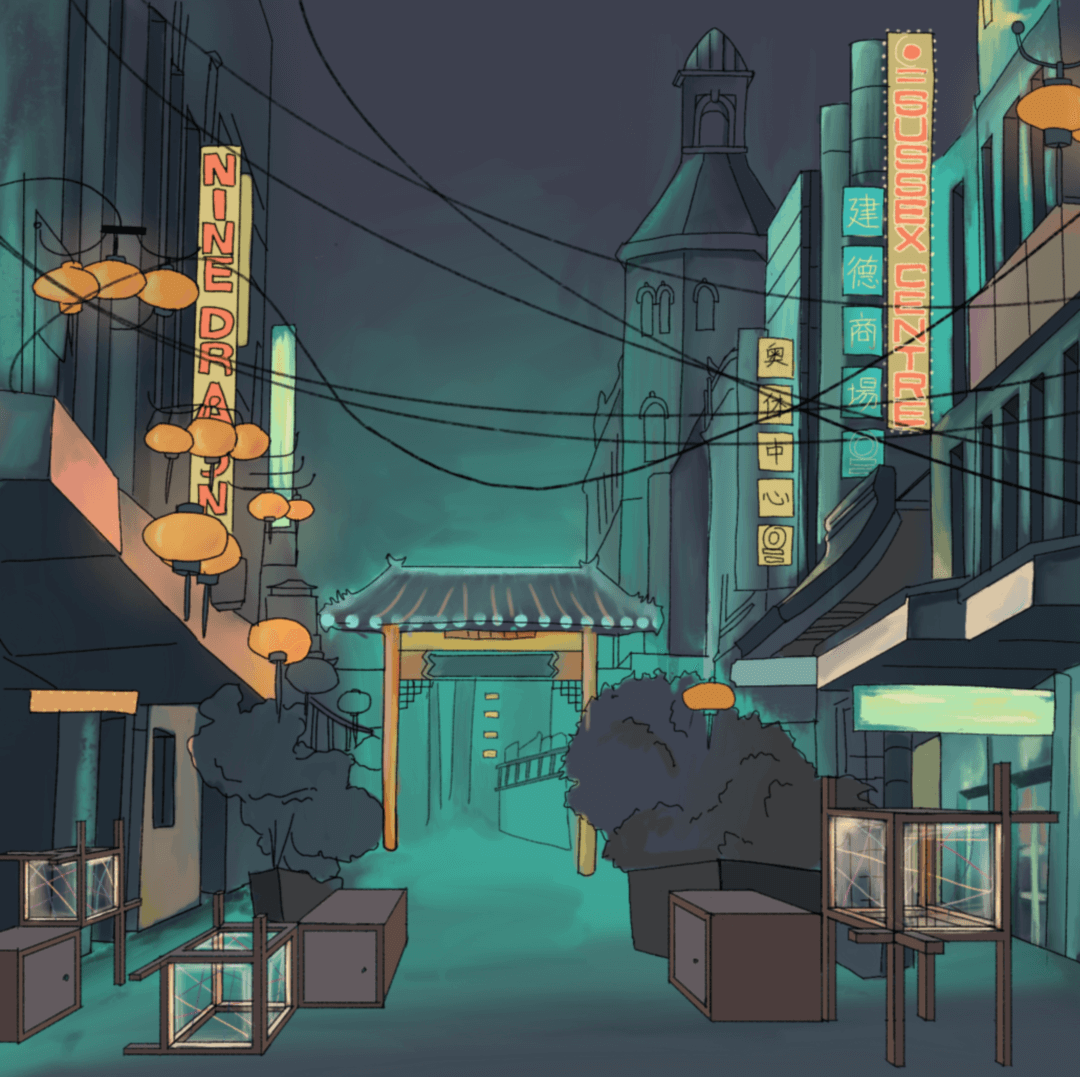
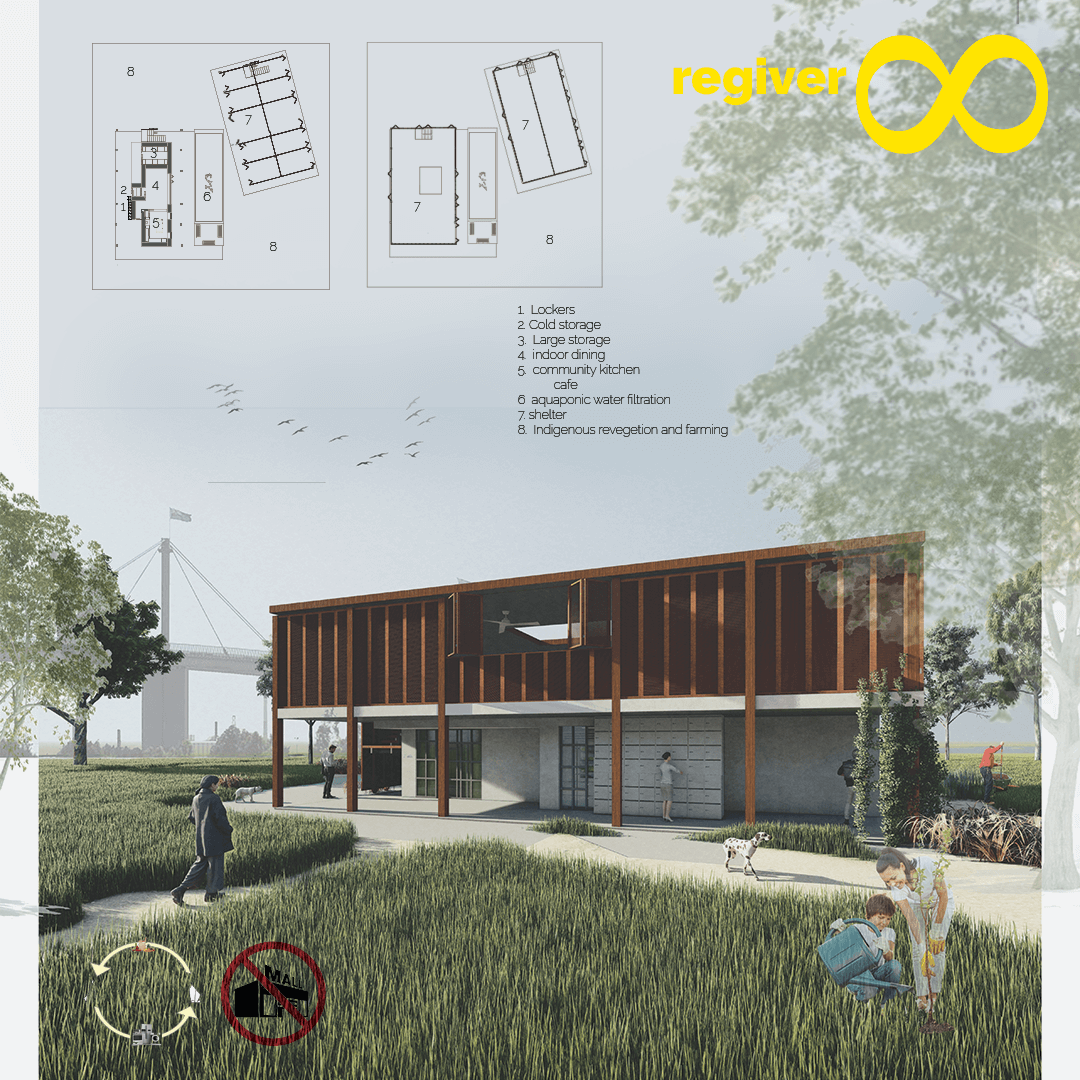
REGIVER8
Carmel BEAMER
Masters Student, University of Melbourne
Re-giver8 Community Share Point, Cafe and Shelter harnesses the idea of “what is mine is yours”. As a collection and redistribution point for food and goods, it addresses issues of waste, homelessness and a sense of community through connection to country, respect and sharing. located on the banks of the Yarra river, There is a concrete building that would be repurposed, to become a cafe and shelter, with community gardens, share hubs and billboards. These would be where people can share items they don’t use to pay it forward.
EDITORIAL
We are well versed in the urgencies that surround our current climate breakdown. With the clock well and truly ticking, living ‘sustainably’ is no longer enough. Our current environmental situation is so dire, that sustaining ourselves at the current rate of consumption simply cannot reverse the catastrophic effects of climate
change. If our actions are to make any kind of impact, we must start to look beyond living sustainably and instead look at how we can reverse the destruction through regenerative design. In the built environment, this will mean surpassing ‘sustainable design’ in favour of ‘regenerative design’ thinking.
Regenerative design thinking involves approaching design in an holistic manner, responding not only to best practice building principles, but addressing social and economic factors.
While we have seen glimmers of hope for our environment through the empty streets of cities around the world, the events of the past two years have exposed tears and loose threads in our urban and social fabric. Different parts of the world have been seen as too crowded, or too disconnected; often both. Australia witnessed unprecedented relocation (for those who could afford it) from urban areas to sub-urban areas, depopulating city centres, markedly affecting traditional and familiar urban activities, while amplifying the shortfalls of our disconnected suburbs.
These tears in our social fabric, this deterioration of community, must be addressed if we are to reconcile our approaches to sustainable development with our continued existence within the ecosystem.
Our imagination is exceptionally powerful. People’s ability to engage imagination in thought and behaviour is a key distinction to other living species that surround us. The question ‘What if…’ can creatively draw from individual and
collective memories, to establish narrative, storytelling, and knowledge exchange between others. Imaginative processes have the ability to strengthen social ties, effectively guiding, influencing, and healing individuals, groups and communities. These narratives also shape how we interact with the world around us and our relationship with nature.
Consider the narrative effects and associated environmental impacts of ‘the Australian Dream’, vs. that of ‘the Most Bike Friendly City in the World’. Both form a core part of a resident’s identity; both collectively steer the development of cities. As designers, we are charged to play a leading role in creating positive and impactful design responses. We have the ability to instigate and provoke. We can generate layers of solutions. Our approach celebrates process; both in design itself, but also the societal processes that design might bring about. Our aptitude for systems thinking allows us to imagine scalable solutions to address the unparalleled challenges of climate breakdown.
Big change can start small. Our identities are intimately tied to the narratives of our
communities. These identities and our connection to place influence the ways that
we think and act. Through design, we have the ability to intervene and steer these
narratives toward constructive ends.
Written by the 2022 Super Studio Creative Directors:
Matt Alfred, RAIA Grad.
Christopher Pongrac, RAIA
Yaara Plaves, RAIA
Reem Daou, SONA
EDITORIAL COMMITTEE
Nick BROWN
Undergraduate student – University of Canberra
Sionnan GRESHAM
Undergraduate student – University of Queensland
Blake HILLEBRAND
Masters student – RMIT
Thomas HUNTINGFORD
Masters student – University of Melbourne
Oktavia KIRANA
Undergraduate student – University of New South Wales
Liam LEBLOND
Undergraduate student – University of Queensland
Pei TAN
Masters student – University of Tasmania
Matthew SABRANSKY
Undergraduate student – Deakin University
Subah Shahid
Undergraduate student – University of Western Australia
